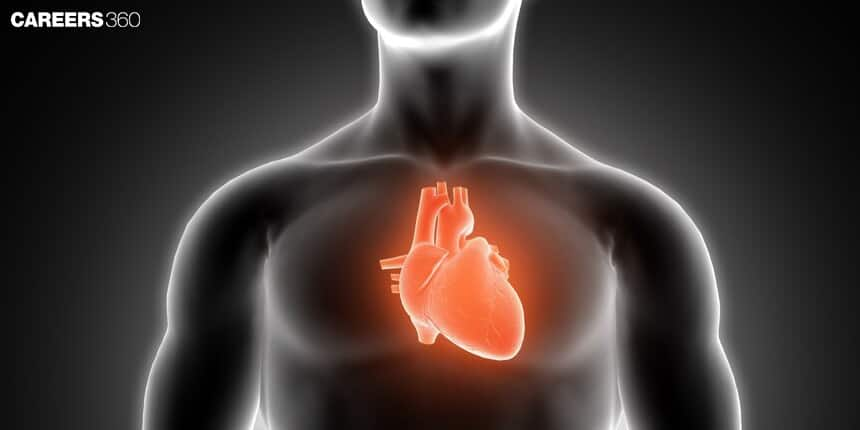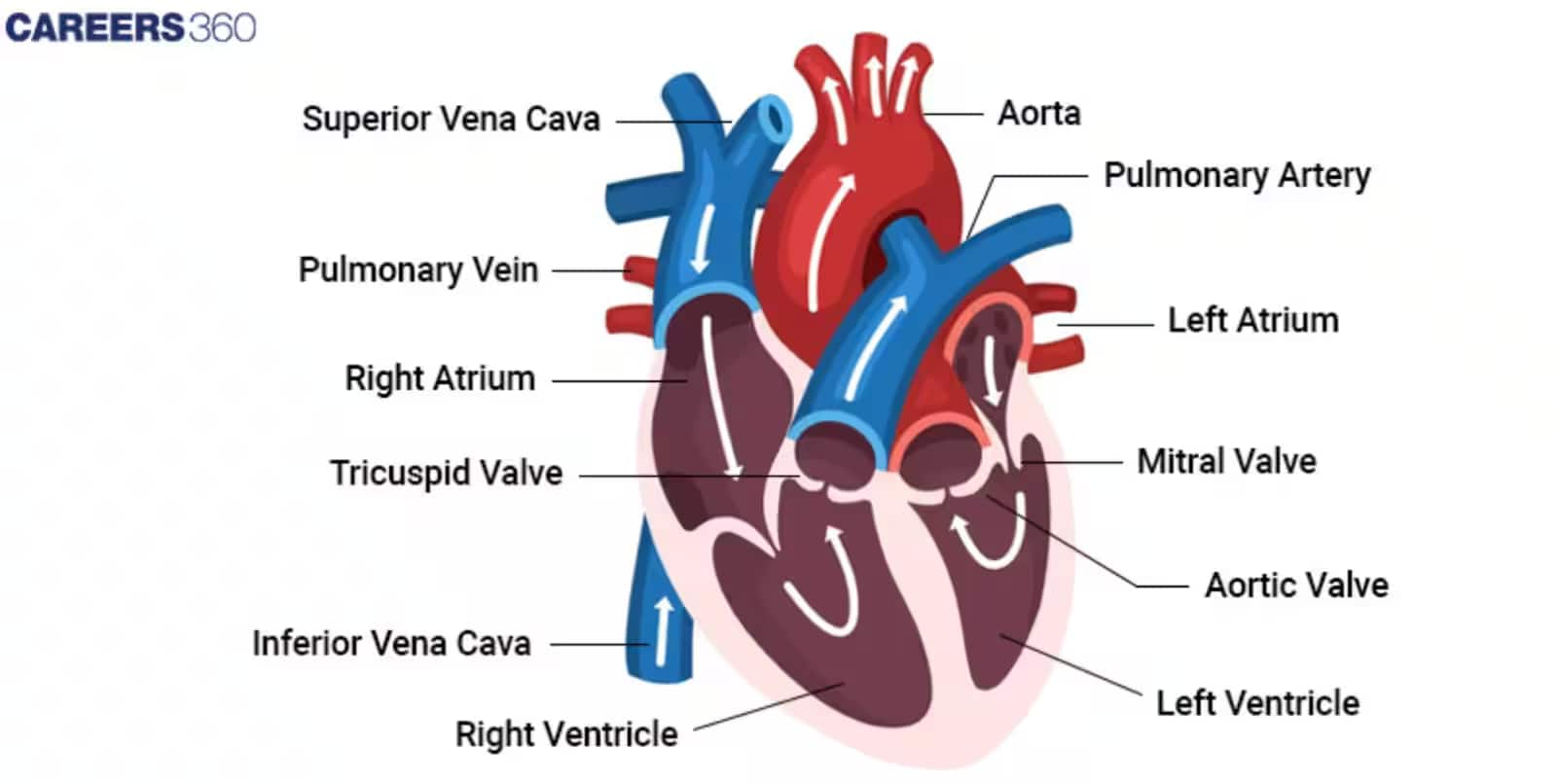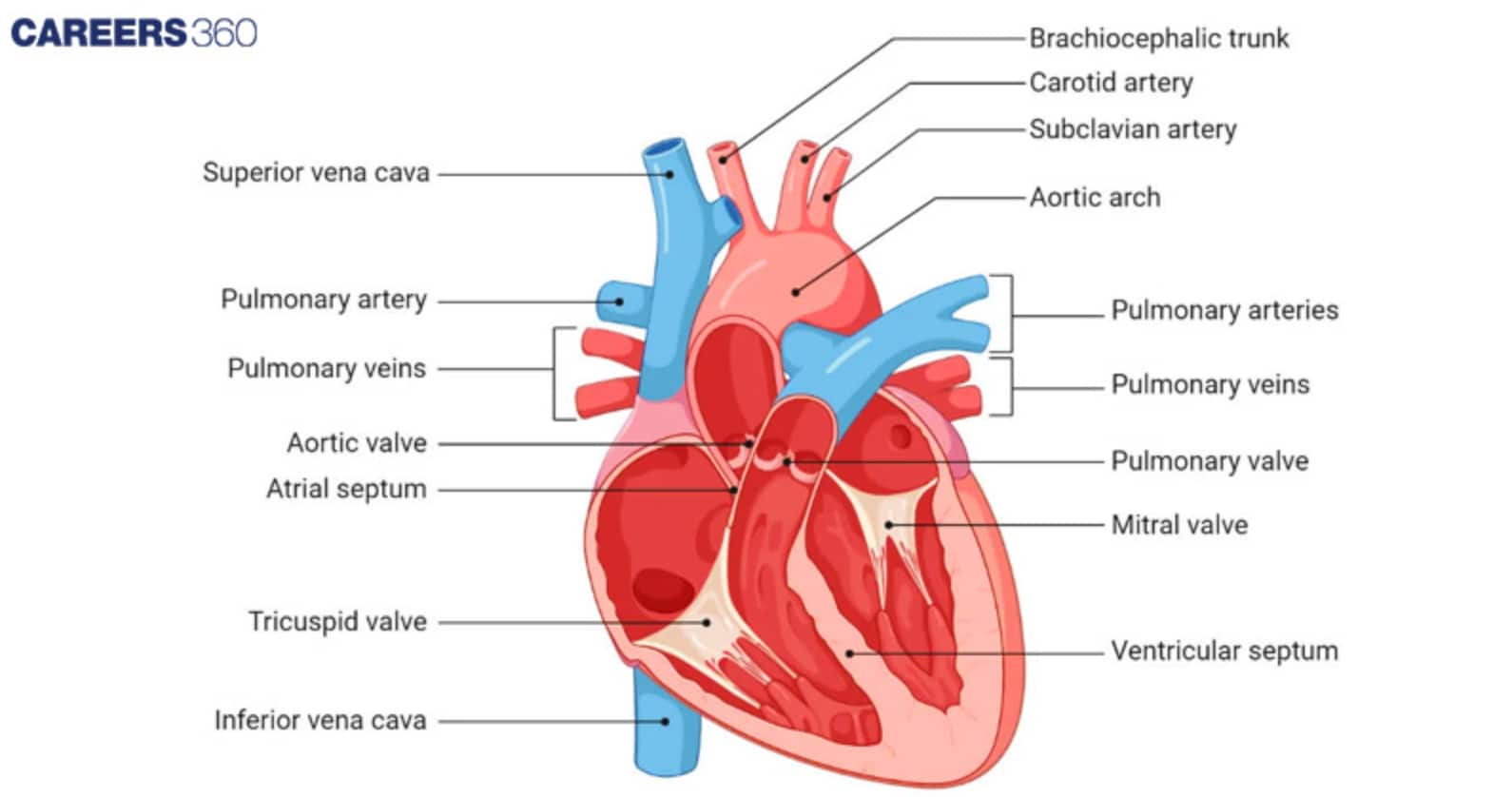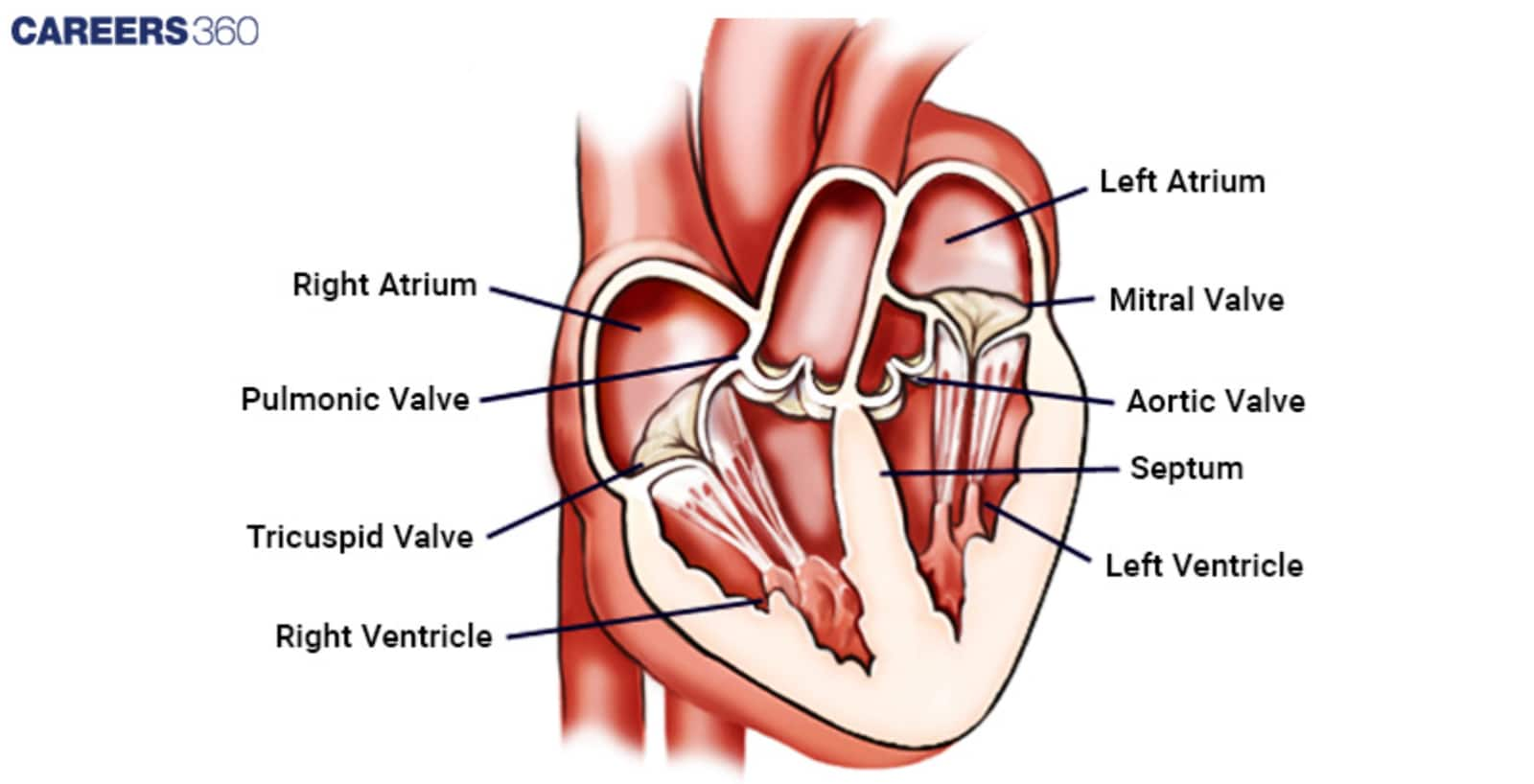Diagram of Heart
The human heart is an important muscular organ that pumps blood. It has four chambers—two atria and two ventricles—that work together to circulate oxygen-rich blood to the different organs. In this article, the human heart, and the anatomy of the human heart are discussed. The human heart is a topic of the chapter Body Fluids and Circulation in Biology.
Latest: NEET 2024 Paper Analysis and Answer Key
Don't Miss: Most scoring concepts for NEET | NEET papers with solutions
New: NEET Syllabus 2025 for Physics, Chemistry, Biology
NEET Important PYQ & Solutions: Physics | Chemistry | Biology | NEET PYQ's (2015-24)

What is Heart?
The heart is one of the principal human body organs that play a crucial role in the circulatory system as it is in charge of the circulation of blood in the body to facilitate aeration, supply nutrients and expulsion of metabolic wastes. Knowing the human heart is necessary for comprehending the simple vital and ruling life procedures and their importance in the clinical analysis and treatment of diseases. Appreciation of these ideas is essential, especially for individuals seeking to become healthcare professionals as they determine how the patient’s clinical signs present, how to handle the patients, and how to manage the patients’ conditions appropriately.
Also Read-
Anatomy of the Heart
The human heart is a muscular organ located in the chest that consists of four chambers and which pumps blood to and from the body.
It has an upper chamber called atria, a lower one known as the ventricles and a muscular wall known as the septum that divides the chambers.
The heart's major parts include:
Atria: The right atrium collects deoxygenated blood which is pumped to the heart through the superior and inferior vena cava while the left atrium collects oxygenated blood from the lungs through the pulmonary veins.
Ventricles: The right ventricle sends blood that is low in oxygen through the pulmonary artery to the lungs while the left ventricle which has high-oxygenated blood sends it to the rest of the body through the aorta.
Valves: There are four main blood flow control valves including the tricuspid, pulmonary, mitral, and aortic ones; the tricuspid valve is located between the right atrium and ventricle; the pulmonary is at the exit of the right ventricle; the mitral is between the left atrium and ventricle; the aortic is at the exit of the left ventricle.

Layers of the Heart Wall
The heart wall is composed of three distinct layers:
Epicardium: The outer layer, the outermost layer of very loose connective tissue that protects the target tissue.
Myocardium: The second layer is a middle layer that is a thicker portion of the cardiac muscle including the layers that cause the contractions of the heart.
Endocardium: They are grouped into four layers with layer one being the thinnest layer and the inner layer of the heart walls It is also found on the heart valves where it gives a smooth surface to the blood flow.
Chambers of the Heart
The heart is divided into four chambers:
Right Atrium: Gathers deoxygenated blood from the body and directs it to the right atrium of the heart through this S-shaped tube.
Right Ventricle: Pumps deoxygenated blood to the lungs for oxygenation increasing the level of oxygen in the bloodstream.
Left Atrium: Recovered O2-rich blood from the lungs and pumps it into the left ventricle chamber.
Left Ventricle: Kills off low-oxygenated blood in the pulmonary veins and pumps oxygenated blood to all parts of the body.
Well-labelled diagram of the Heart

Valves of the Heart
The heart contains four valves that ensure unidirectional blood flow:
Tricuspid Valve: It is located between the right atrium and right ventricle and this prevents the backflow of blood towards the atrium.
Pulmonary Valve: It is located in between the right ventricle and the pulmonary artery; its function is to stop the blood from flowing back into the right ventricle.
Mitral Valve: Located between the left atrium and left ventricle, its purpose is to avoid the backflow coming into the atrium.
Aortic Valve: It is situated between the left ventricle and aorta and it closes to prevent backflow into the ventricle.

Also Read-
| Facts about Blood | Facts about Blood Group |
| Types of Blood Cells | Blood coagulation |
| ABO Blood Group | Circulatory System |
Recommended video for Heart
Frequently Asked Questions (FAQs)
The heart circulates oxygen-rich blood to the body and the deoxygenated blood back to the lungs to be oxygenated.
Blood circulation to the right side of the heart is maintained through four valves, tricuspid, pulmonary, mitral and aortic which only let blood flow in one direction.
Systemic circulation means it supplies the oxygenated blood to the rest of the body and removes the deoxygenated blood and takes it back to the heart; Pulmonary circulation means; it takes the deoxygenated blood to the lungs where it will be oxygenated then transported back to the heart.
Coronary arteries provide the blood with rich oxygen to the muscular walls of the heart.
An ECG monitors the heart's electrical impulses to identify the irregularities of rhythm and conduction.
Also Read
29 Nov'24 01:19 PM
27 Nov'24 07:39 PM
27 Nov'24 07:15 PM
27 Nov'24 05:11 PM
26 Nov'24 08:14 PM
26 Nov'24 06:50 PM
26 Nov'24 05:51 PM
26 Nov'24 04:44 PM
26 Nov'24 03:52 PM
26 Nov'24 02:55 PM